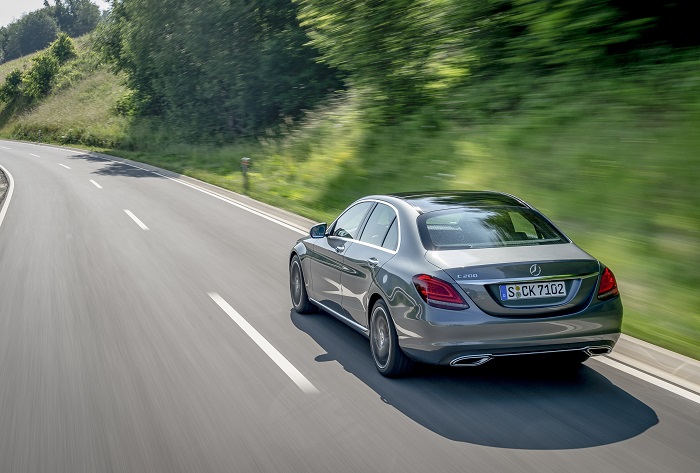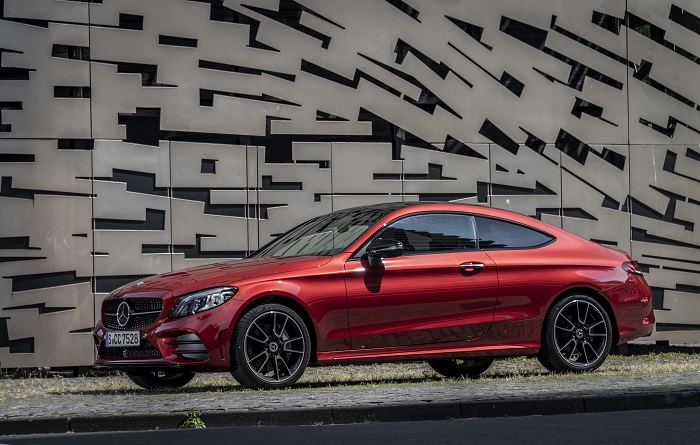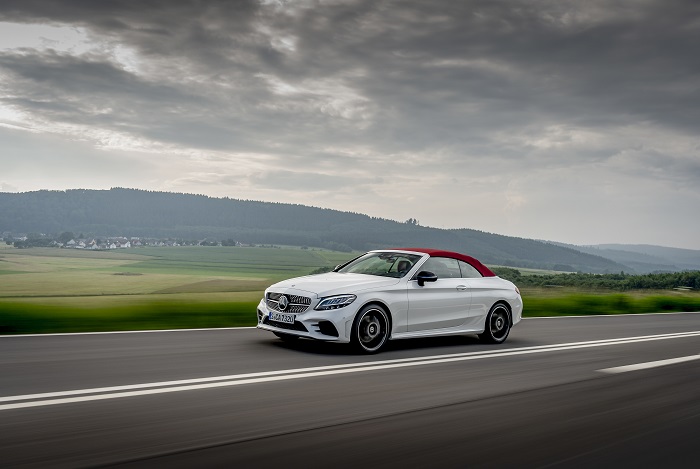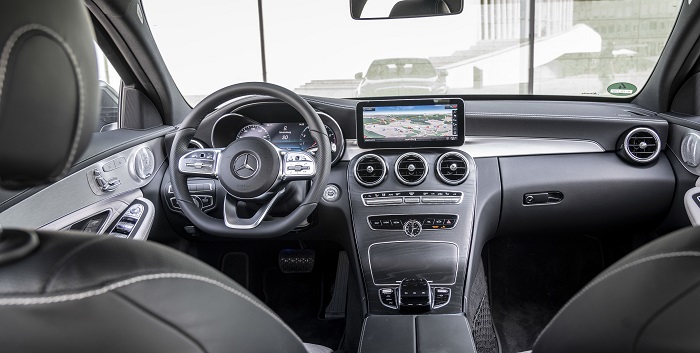Fast-forward to 1982, and the world was introduced to the “Baby Benz” in the form of the W201 before the first model to bear the C-class nomenclature appeared in 1993 with the introduction of the W202.
We’re now a few generations down the line with the current model designation being the W205, which is produced locally at the brand’s East London plant. Now roughly halfway through its lifecycle, Mercedes-Benz has updated the C-class range with new engines, updated styling, new in-car technology and a simplified model range. I had a chance to drive the newcomer in Johannesburg recently.
Almost 6 500 new parts

As with many updates these days, the difference between the pre-facelift W205 and the model that replaces it is rather difficult to spot, however, the brand claims to have changed close to 6 500 parts on the new car. From and aesthetic perspective, the updated C-class, in sedan, coupe and cabriolet guises, all benefit from an updated front and rear bumper and revised LED head and tail lamps.
There are also new colours available, some specific to the coupe/cabriolet, the sedan or the AMG variants, while new wheels options are also available too. The C-class range is available in either basic, Avantgarde or AMG Line trims for the exterior and interior styling.

It really is a case of sport the difference with the update, but in reality, the C-class didn’t really need to be drastically redesigned, though, when it comes to the interior, quite a bit has changed.
This new model features a new steering wheel and can be specified with many of the semi-autonomous driving systems as seen on the updated S-class. There’s also a revised centre console and the option of a 12.3-inch digital instrument cluster, which compliments the now larger ten-inch infotainment screen with improved camera systems.

The interior really is a big improvement over the previous model; that steering wheel with its aluminium inserts feels and looks upmarket while the scrolling pads for the various functions on it are still far from ideal in term of functionality. The semi-autonomous driving aids are up there with the best in the industry at the moment, and while the digital instrument cluster is a nice touch, it’s not exactly new, with other premium car makers having used similar systems for years.
As has been the case with many a Mercedes-Benz product over the past few years, the odd poor quality plastic surface or fitting is still visible and in certain instances, takes away from what essentially feels like a premium product.
Driving C-class
At the media event, I had an opportunity to drive two variants, the C180 and the Mercedes-AMG C43. The entry level C-class retains its 1.6-litre turbo-petrol motor with 115kW/250Nm, and is now only available with the 9G-Tronic automatic gearbox.
Hopping from the base engine to the C43 was a rather substantial leap and despite the C180 on offer being better-specified than the AMG, it was easy to notice the improvements made to the C43. Aside from the power bump to 287kW/520Nm from the 3.0-litre bi-turbo V6 motor, the C43 also sounds better, has a more direct and communicative front-end and will now get from 0-100km/h in a claimed 4.7 seconds.

The big news within the range is the C200 though, which benefits from a new 1.5-litre turbo-petrol motor combined with a 48-volt mild-hybrid set-up which produces a total of 135kW/280Nm. This is the variant that I was most looking forward to sampling as many new passenger cars in future will use this sort of step-up.
Moving further up the range, there’s a solitary turbodiesel variant in the form of the C220d which utilises the Euro 6d-TEMP compliant 2.0-litre motor with 143kW/400Nm on offer. Next up is the C300 which has a 180kW/370Nm 2.0-litre turbo-petrol motor.
Pricing
Sedan
C180- R586 500
C200 - R613 500
C220d - R651 000
C300 - R716 000
Mercedes-AMG C43 - R948 500
Coupe
C200 - R666 000
C300 - R766 000
Mercedes-AMG C43 - R983 500
Cabriolet
C200 - R793 500
C300 - R884 000
Mercedes-AMG C43 - R1 100 000
















